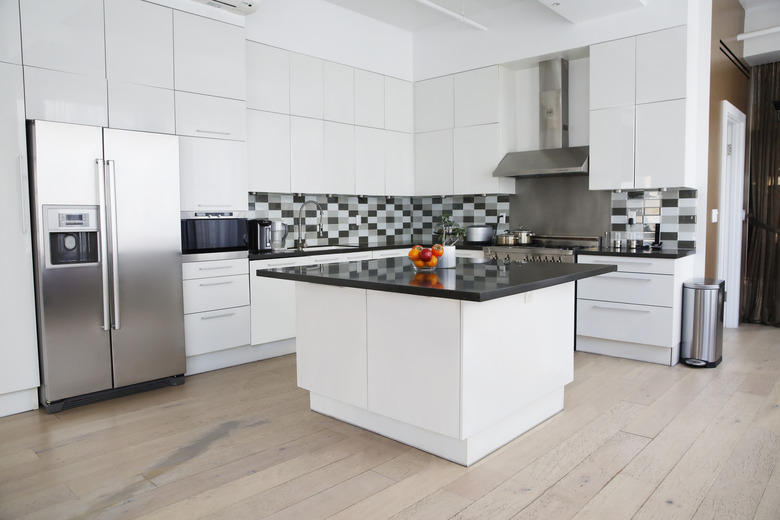How To Use A French Door Refrigerator Next To A Wall
We may receive a commission on purchases made from links.
A refrigerator is constantly working to keep food at a safe temperature and ice production at a steady pace. The space between the refrigerator and a sidewall is not just for style or to allow for those thin serving trays to be tucked neatly away, it's also needed to ensure the proper functioning of your French door refrigerator.
Sizing Up a Refrigerator
Sizing Up a Refrigerator
The French refrigerator doors are half the size of a standard one-door refrigerator. This makes them ideal for small spaces because they require less clearance than the traditional refrigerators.
The standard depth of a refrigerator extends about six inches past the front edge of the counters. If you prefer the French door refrigerator to be in alignment with the countertop, look for a counter-depth style that will fit flush with the edge of your workspaces.
Each refrigerator has its set of rules for space requirements. However, the standard dimensions for a refrigerator range from around 28 ¾ of an inch to 39 ¾ inches wide and 28 ¾ to 34 5/8 inches in depth, according to Home Depot. The height of a standard fridge varies quite a lot, from around 61 inches to 71 inches.
How to Measure the Space
How to Measure the Space
Before bringing home that shiny new French door fridge, make sure it will nestle neatly within the confines of the space that is available in your kitchen. Start by measuring from the narrowest points, such as the upper cabinets and countertops. This will ensure that you get a good fit.
Measure the height of the refrigerator nook from the base to the upper cabinet. Take two measurements, one from the back and one from the front. This can save you time if you have a slanted floor or cabinets that have warped or were installed incorrectly. If the height measurements from front to back are not the same, then use the shorter measurement to ensure that the appliance will swiftly slide into the allotted space.
To measure the depth, run a tape along the back wall to the front of the counters. For kitchens with islands, measure the distance from the countertops to the island. This will make installing the fridge and moving around the island easier as well as allow the French refrigerator doors to clear.
Measuring GE Fridge Door Clearance
Measuring GE Fridge Door Clearance
GE Appliances recommends that the refrigerator door be able to open a minimum of 90 degrees. This will allow the crisper, deli and other drawers to slide open without knocking against the shelves on the door.
Measuring LG Refrigerator Space Requirements
Measuring LG Refrigerator Space Requirements
The LG refrigerator space requirements are meant to allow the appliance to have room for heat to circulate. A basic guide is to allow for 2 inches in the back, 1 inch at the top between the upper cabinets and the refrigerator and a minimum of 1/8 of an inch on either side of the fridge.
Samsung Fridge Space Requirements
Samsung Fridge Space Requirements
The Samsung refrigerator ventilation clearance is also a minimum of 2 inches behind the appliance. Don't be tempted to stack items and clog the ventilation over the top of the refrigerator. Keep paper bags and other thin items from sliding between the fridge and cabinets.
